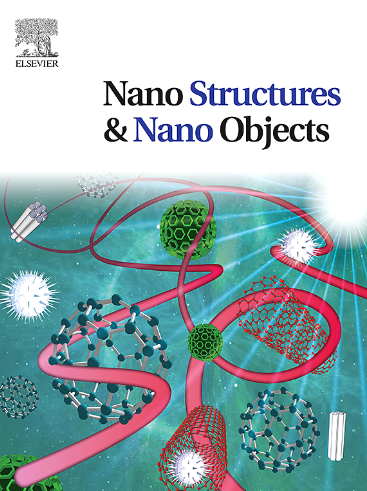Nanoparticle troopers: Infiltrating cancer cells for targeted therapies
IF 5.45
Q1 Physics and Astronomy
引用次数: 0
Abstract
Nanoparticles are revolutionizing cancer treatment by overcoming the limitations of conventional drug delivery systems, which often result in significant side effects and reduced therapeutic efficacy due to non-specific targeting and poor solubility. Traditional chemotherapeutic agents can damage healthy tissues, particularly those with rapidly dividing cells, necessitating lower drug dosages and leading to disappointing survival rates. To address these challenges, nanoparticles utilize the enhanced permeability and retention (EPR) effect, allowing for improved drug accumulation in tumor tissues. Engineered nanoparticles can be designed for specific targeting by incorporating ligands that selectively bind to receptors on target cells and tumor vasculature. Additionally, stimuli-responsive nanoplatforms represent an innovative approach; these platforms remain inactive in normal conditions but become activated in the tumor environment, releasing their therapeutic payload in a controlled manner. This targeted strategy not only enhances treatment efficacy but also minimizes exposure to healthy cells. Researchers are focusing on modifying nanoparticle surfaces with biological ligands, known as active targeting, which improves absorption and facilitates stronger attachment to specific receptors on cancer cells. By concentrating on the unique features of malignancies, nanomedicine offers a more efficient method for addressing solid tumors and reduces the risk of developing resistant clonal populations of cancer cells. Overall, nanotechnology provides the potential for selective targeting of malignant cells, enhancing drug delivery and uptake while minimizing harm to healthy tissues. This paper explores the principles of nanoparticle targeting, interactions with cancer cells, and drug release mechanisms, highlighting the transformative potential of nanotechnology in advancing cancer therapies.
纳米粒子部队:浸润癌细胞靶向治疗
纳米颗粒通过克服传统药物传递系统的局限性,正在彻底改变癌症治疗。传统药物传递系统由于非特异性靶向和溶解度差,通常会导致显著的副作用和降低治疗效果。传统的化疗药物会损害健康组织,特别是那些快速分裂的细胞,需要较低的药物剂量,导致令人失望的存活率。为了解决这些问题,纳米颗粒利用了增强的渗透性和滞留性(EPR)效应,从而改善了药物在肿瘤组织中的积累。工程纳米颗粒可以通过结合配体选择性地结合靶细胞和肿瘤血管上的受体来设计特定的靶向。此外,刺激响应纳米平台代表了一种创新的方法;这些平台在正常条件下保持无活性,但在肿瘤环境中被激活,以受控的方式释放其治疗有效载荷。这种有针对性的策略不仅提高了治疗效果,而且最大限度地减少了对健康细胞的暴露。研究人员正专注于用生物配体修饰纳米颗粒表面,这被称为主动靶向,它可以提高吸收,并促进与癌细胞上特定受体的更强附着。通过专注于恶性肿瘤的独特特征,纳米医学为治疗实体肿瘤提供了一种更有效的方法,并降低了产生耐药克隆癌细胞群体的风险。总的来说,纳米技术提供了选择性靶向恶性细胞的潜力,增强了药物的传递和吸收,同时最大限度地减少了对健康组织的伤害。本文探讨了纳米粒子靶向的原理、与癌细胞的相互作用以及药物释放机制,强调了纳米技术在推进癌症治疗方面的变革潜力。
本文章由计算机程序翻译,如有差异,请以英文原文为准。
求助全文
约1分钟内获得全文
求助全文
来源期刊

Nano-Structures & Nano-Objects
Physics and Astronomy-Condensed Matter Physics
CiteScore
9.20
自引率
0.00%
发文量
60
审稿时长
22 days
期刊介绍:
Nano-Structures & Nano-Objects is a new journal devoted to all aspects of the synthesis and the properties of this new flourishing domain. The journal is devoted to novel architectures at the nano-level with an emphasis on new synthesis and characterization methods. The journal is focused on the objects rather than on their applications. However, the research for new applications of original nano-structures & nano-objects in various fields such as nano-electronics, energy conversion, catalysis, drug delivery and nano-medicine is also welcome. The scope of Nano-Structures & Nano-Objects involves: -Metal and alloy nanoparticles with complex nanostructures such as shape control, core-shell and dumbells -Oxide nanoparticles and nanostructures, with complex oxide/metal, oxide/surface and oxide /organic interfaces -Inorganic semi-conducting nanoparticles (quantum dots) with an emphasis on new phases, structures, shapes and complexity -Nanostructures involving molecular inorganic species such as nanoparticles of coordination compounds, molecular magnets, spin transition nanoparticles etc. or organic nano-objects, in particular for molecular electronics -Nanostructured materials such as nano-MOFs and nano-zeolites -Hetero-junctions between molecules and nano-objects, between different nano-objects & nanostructures or between nano-objects & nanostructures and surfaces -Methods of characterization specific of the nano size or adapted for the nano size such as X-ray and neutron scattering, light scattering, NMR, Raman, Plasmonics, near field microscopies, various TEM and SEM techniques, magnetic studies, etc .
 求助内容:
求助内容: 应助结果提醒方式:
应助结果提醒方式:


